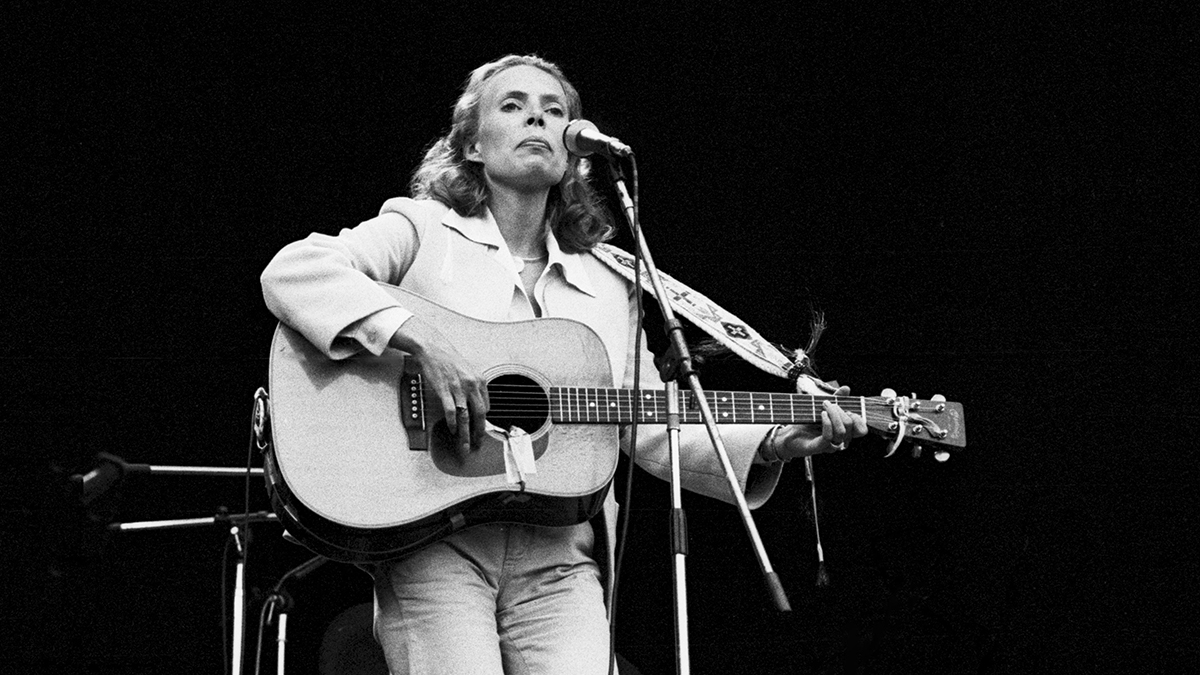“In trying to make this huge sound, she ended up with this ‘one-person band’ approach that was completely different to the guitarists that’d gone before”: Jon Gomm on how Joni Mitchell changed progressive acoustic guitar forever
One acoustic hero pays tribute to another, with Gomm pinpointing the pioneering approaches championed by Mitchell that make her one of the most influential acoustic players of all time

Joni Mitchell penned some of the 20th century’s greatest songs and devised more alternate tunings than any of her peers.
Modern fingerstyle wizard Jon Gomm outlines why Joni is the G.O.A.T. of progressive acoustic guitar…
She broke into uncharted territory with over 50 tunings…
“It used to be that tunings made logical sense. You’d think: ‘How can I play the chords I always play, but in a different tuning to allow me to do different technical things with my fingers?’ That’s where Joni started: messing about with open major chord tunings from the old blues tradition.
“The reason she was interested in them was because she had polio, and particularly her left hand could be really limited. She wanted to 'paint' with sound, so she started to look at these tunings and experiment with them, moving the strings further apart from each other so that she had a bigger range or compositional matrix of pitches.”
…and devised her own system to keep track of them all
“Joni didn’t think of her tunings as being, for example, CGDGAD. She’d tune the bottom string and remember what that was – in this case C – and then would call the tuning 77525. The numbers relate to which fret you play to get the next string. I have this theory about that, which she’s never spoken about.
“But, if you know what notes your guitar strings are tuned to individually, then you can start to think about finding particular chords. She never wanted to do that because she wanted to create this big colour palette background with her guitar tuning, then experiment to find sounds within it.”
She pioneered an “orchestral” approach to guitar
“Joni would think about the bottom strings as doing the job of bass instruments and the top three strings as being the horns. In trying to make this huge sound, she ended up with this 'one-person band' approach that was completely different to the guitarists that’d gone before.
All the latest guitar news, interviews, lessons, reviews, deals and more, direct to your inbox!
“Whereas great technical guitarists like Robert Johnson or Elizabeth Cotten were fingerpicking to make it sound like more than one instrument, she had this completely opposite approach: to make the guitar itself bigger.
“She opened up the acoustic guitar from being a folk instrument, to being this orchestral instrument where you could fill a concert hall with sound on your own by playing it differently and seeing it as a huge sound and colour generator.”
Her right-hand chops were second to none
“Joni would fingerpick sometimes, but what I loved most was her strumming technique, which would sometimes be with a plectrum and sometimes not. She could produce different sounds and have everything be really exciting, just by the way she used her right hand.
“She’d only allow certain notes to come through at certain points so that you’d get melodies and the sense of basslines. The whole time, it’s really rhythmically driven by the way her right hand’s moving.”

She influenced fingerstyle’s greatest influencers
“For my generation, Michael Hedges is our touchstone god of reinventing the acoustic guitar. My peers think that you have to go back to Leo Kottke or other technical guitarists that came before, but Hedges doesn’t sound anything like those guys. It came from Joni Mitchell. That’s who [Hedges] was getting his ideas from.
“There’s one particular song called The Wolf That Lives in Lindsey. It’s got a low tuning and she uses the bass string to keep things constant, then she uses harmonics in a way which is so reminiscent of modern guitar playing. They’re like these shards of ice crashing on the ground over the top of thunderous bass. She hits it so hard that the note warps in and out of tune to create this dramatic effect. It’s revolutionary.
“Then, there’s a Michael Hedges song from his first album – which is the one that kind of blew the acoustic guitar world apart – and it’s called Silent Anticipations. If you listen to those two songs side by side, I’d almost say he ripped her off! He goes somewhere else, but you can really, really hear it.”
Since graduating university with a degree in English, Ellie has spent the last decade working in a variety of media, marketing and live events roles. As well as being a regular contributor to GuitarWorld.com, she currently heads up the marketing team of a mid-scale venue in the south-west of England. She started dabbling with guitars around the age of seven and has been borderline obsessed ever since. She has a particular fascination with alternate tunings, is forever hunting for the perfect slide for the smaller-handed guitarist, and derives a sadistic pleasure from bothering her drummer mates with a preference for wonky time signatures.

